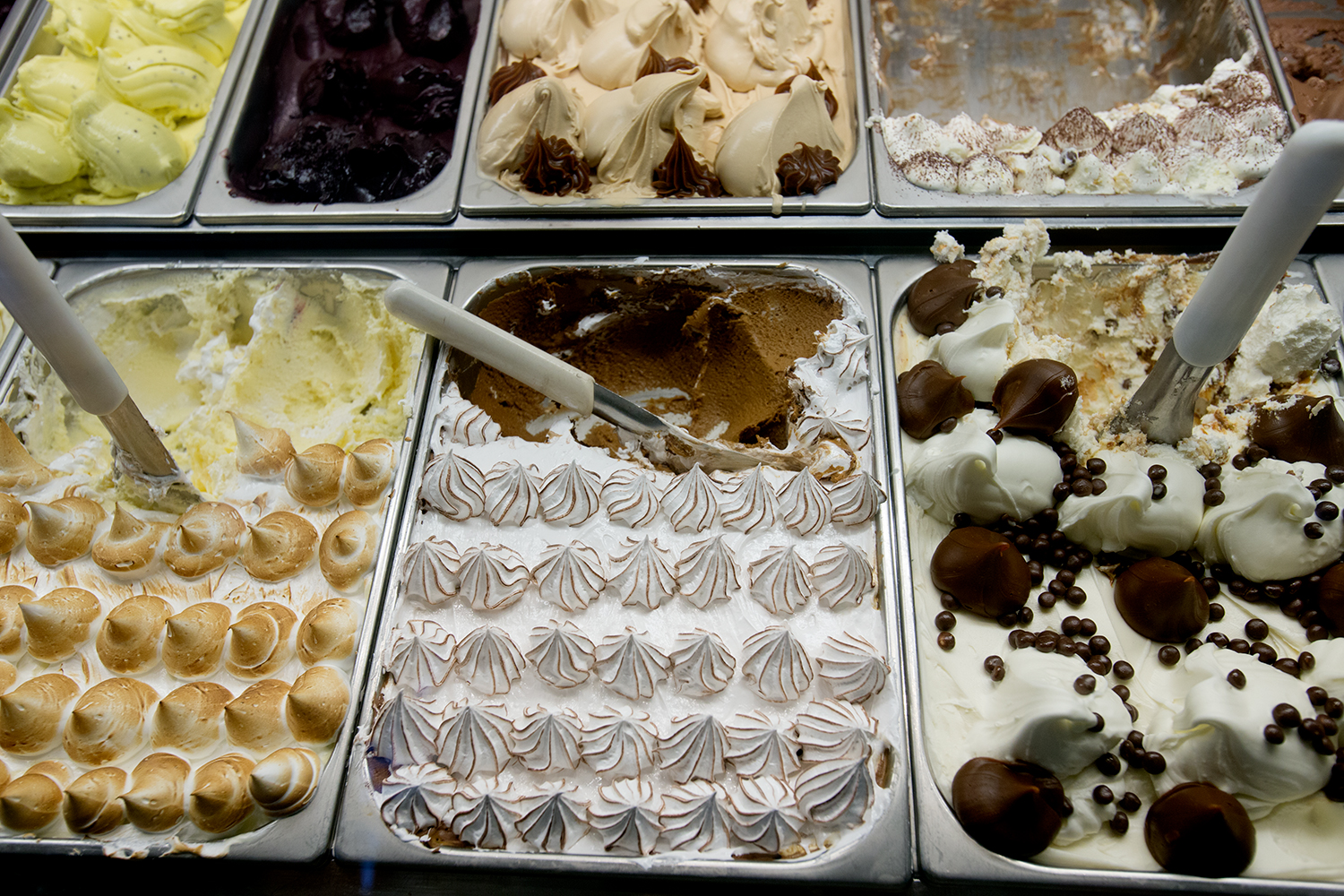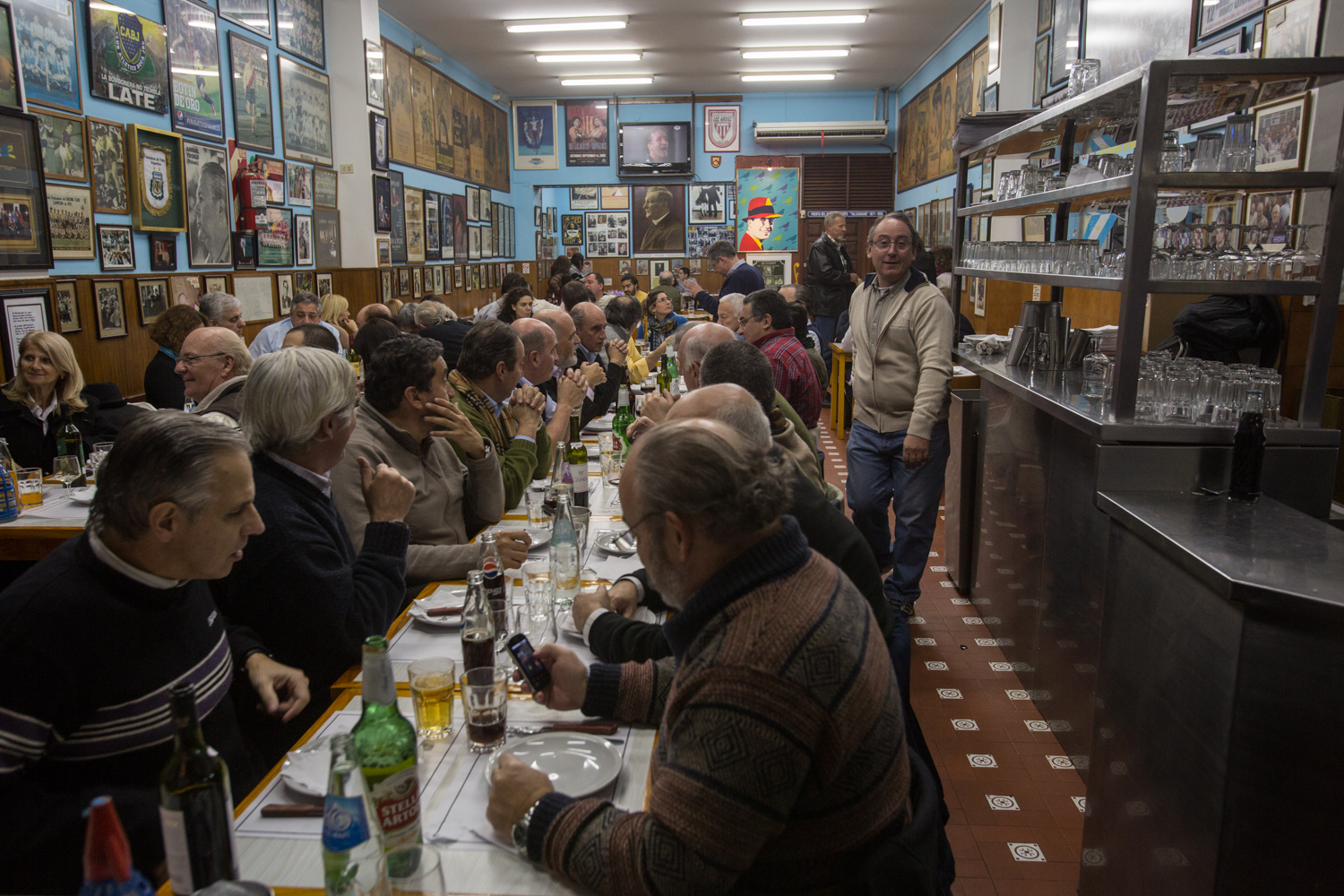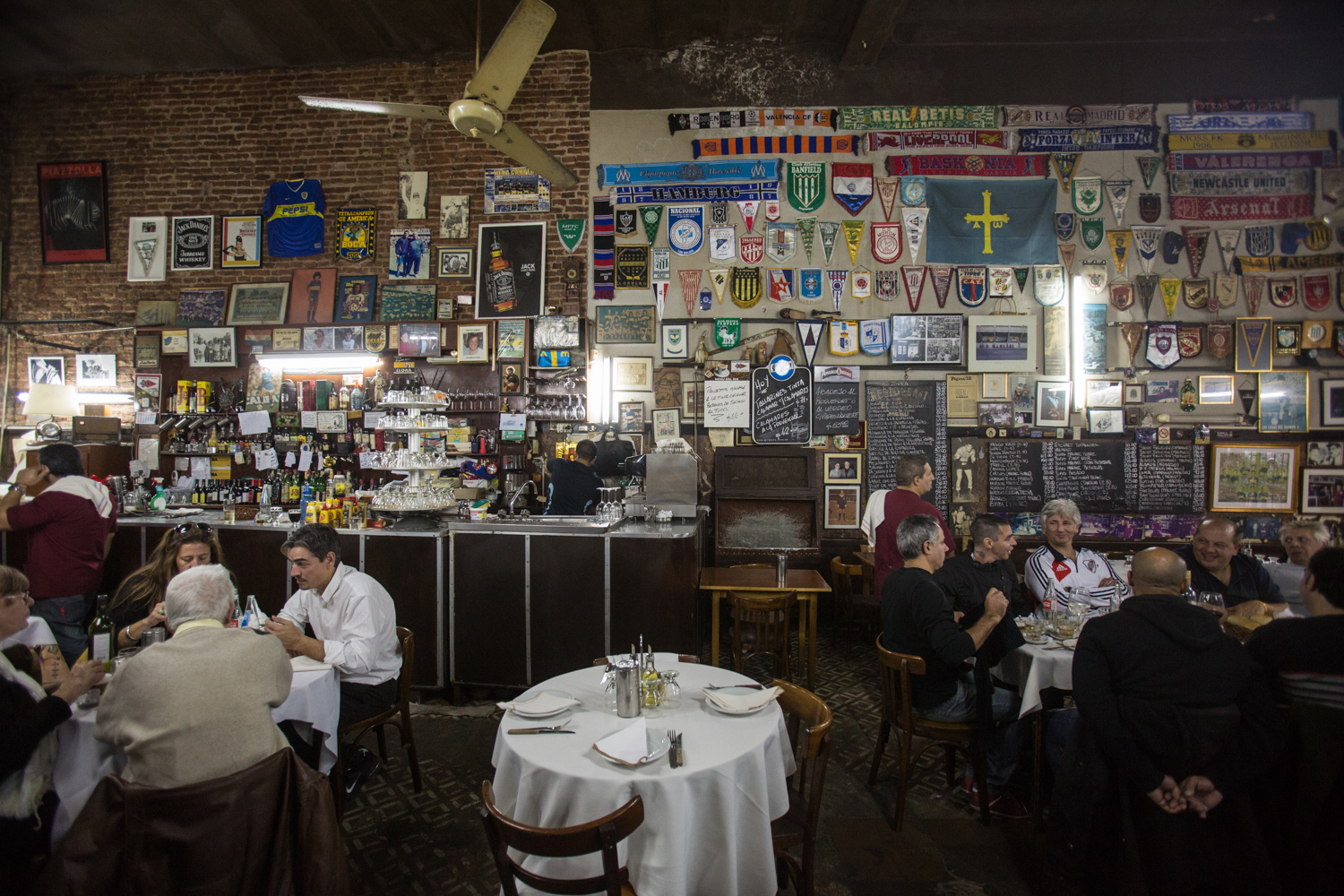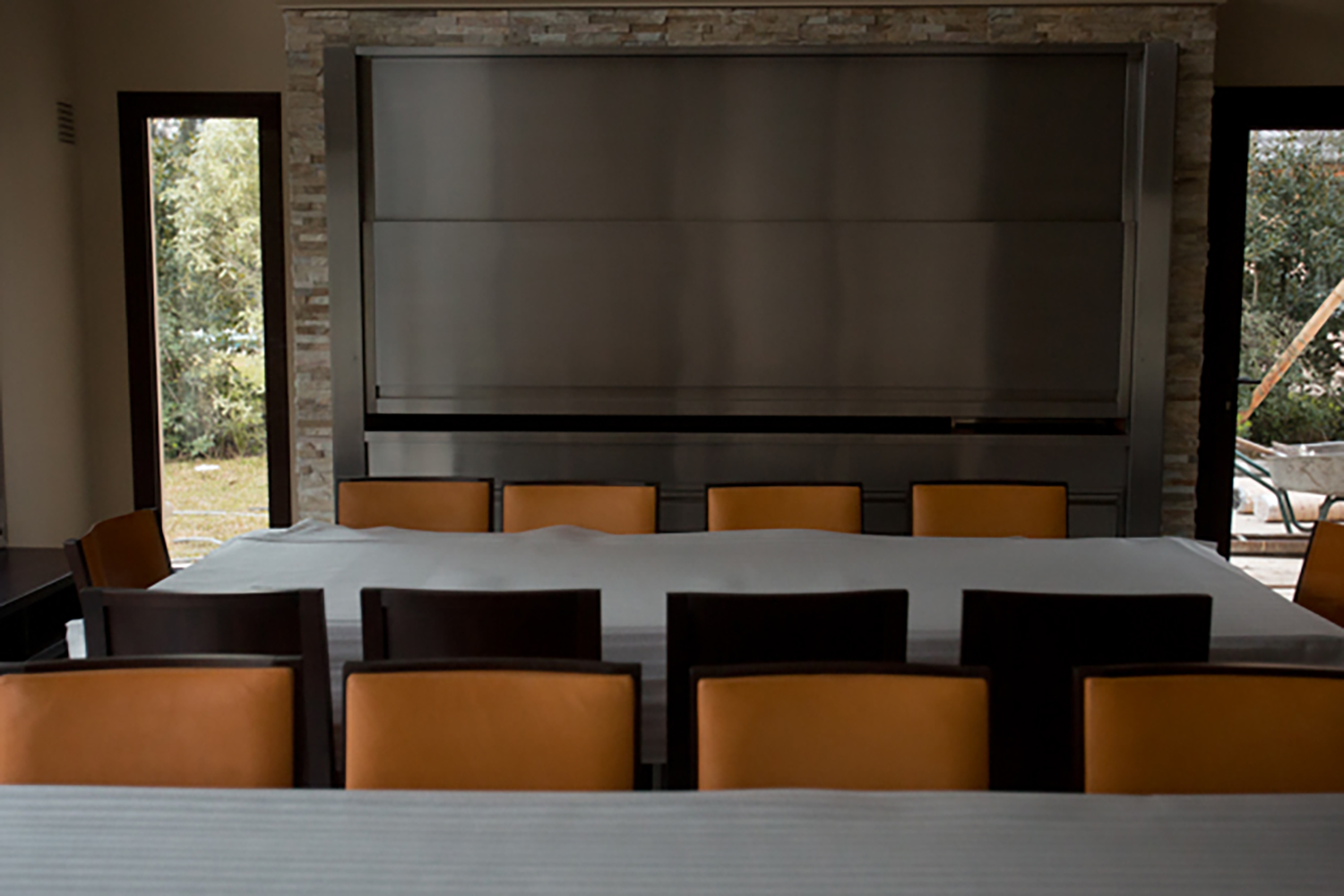Argentina 3 - Elevating the Grill (Literally)
We were in the midst of the 17th snowfall in two weeks in New York and I found myself wondering how I might get down to Argentina for a weekend because it’s summer there. By weekend I don’t mean two or three days (too far + it's a place too full of wonders) but rather, that any visit to Argentina – especially if you know people there – must include a weekend. Because weekends are when asado goes down throughout Argentina, and probably in Uruguay too.
Asado is a daylong meat barbecue event.
Here are some givens on the topic of asado: everyone with a house has a parrilla (pronounced par-eesha; it’s a kind of grill); everyone with a parrilla hosts asado; and apartment-dwellers without a parrilla go to asados hosted by friends or family, or they host their own in other places.
I didn't get a photo of an asado along the highway, but somewhere around here I saw people unloading their van.
Rollover photo to see the parrilla at Correa, the shoe store.
On our way to asado at our friends’ friends’ house in Canning, a Buenos Aires suburb, we passed many families and groups of friends unloading trays of food (plus sports equipment and other toys) from their vehicles at roadside parrillas. At Correa, a shoe store from which I bought a pair of handmade shoes and was treated to a tour behind the scenes there was a well-used parrilla in the courtyard (I've posted other photos from Correa here).
Why are Argentines grilling en masse every weekend? And another question: why do they do grilling in a way that takes so much time? Why don't they use gas grills where all they have to do is turn a couple of dials and then throw on the food? Or if not that, why don't they take the charcoal route, squirt some lighting fluid, wait 15 minutes for embers, and then get on with it?
Because they've figured out a better way, though it is more time-consuming (they don't mind). Fuel-wise, they use any combination of charcoal, wood, pine cones, dead leaves, branches, and fronds that might be on hand. The grill-person moves a hand over different spots above the fire to feel the heat, and then adjusts the placement of foods to optimize each item's particular cooking needs. The parrilla (remember, pronounced par-eesha) has a height-adjustable grilling surface that allows for maneuverability and, when mastered, offers clear benefits food-wise: a steak, which cooks for over an hour, somehow comes out perfectly tender and pink in the middle.
Asado food is simple and excellent – cuts of beef, organ meats, maybe chicken, certainly chorizo (which gets paired with grilled provolone for a first course), and a number of sides and hors d’oeuvres made in the kitchen.
But the question remains: why do Argentines go to all this trouble so often? Just to eat? In fact, no.
Asado is much more than a food thing; it is a rite of existence, a culturally imperative celebration of family and friendship. Argentines, I found, place much more emphasis on the time they spend with each other than we do in the United States. We're too busy here. The best asado comparatives I can come up with from my life as an American are Independence Day and stadium tailgating. But those each occur only once or a handful of times a year, while in Argentina, Asado happens every weekend. And have no doubt: the purpose of asado is not to celebrate a game or a holiday. It exists as a living manifestation of people’s commitment to staying close with one another. It’s about friendship and friends spending time together. And it's neither sappy nor quaint.
Over and over again I saw how friends and family – and the importance of each relationship – trumps work and money for Argentines. It’s not a bad way to live. I saw how food and libation – though often amazing – nevertheless play second fiddle to the togetherness factor of food events. Sure, it’s difficult to separate the two when they occur at the same time but trust me, friendship and closeness with family are what energize Argentines to have these get-togethers.
Friendship Day "ribbons" on the signage at Rapa Nui. Scroll to see some of their incredible ice cream.
Our visit last summer coincided with Friendship Day – Dia Del Amigo. When our friends Walter and Alejandra first told us about it, I figured it was something specific to their circle of friends and family. Maybe they saw it on the calendar and figured why not make a nice occasion out of this cute concept. Wrong! Friendship Day is an actual holiday celebrated by everyone.
That shoe store/factory with the parrilla in the courtyard? Owner wore a friendship bracelet and at closing hour on Friendship Day, his friends stopped by with a bottle of sparkling wine to celebrate.
When we went out for pizza on the eve of Friendship Day (read about it here), one particularly long table of about 30 people – men who mainly appeared to be in their 50s – were having dinner together. Other smaller tables were occupied with similar groupings of same gender/same age people. I asked Walter about this. His reply: “Friendship Day.”
The large Friendship Day group at the pizzeria, El Cuartito. Scroll for El Obrero, where one Friendship Day group is seated at right.
On Friendship Day itself, we had lunch at El Obrero, a restaurant in an old section of Buenos Aires. Again, many tables with large groups of people together having lunch: Friendship Day. Rapa Nui, an ice cream shop (the best ice cream I've ever had; not kidding) located two blocks from our friends’ apartment, had banners facing the sidewalk that proclaimed, “20 de Julio Dia Del Amigo.” Friendship Day.
Continuous bells and dings of sends and receipts from devices, texting and ringing that together sound as frenetic as those I’ve witnessed at Campo de’ Fiori in Rome on a hoppin’ Saturday night filled my ears with sounds. What was happening? Friendship Day.
You get it. Friendship matters in Argentina. But what about the food? What about the food?
It's great!
I shot video and made some still photos over the course of our asado day. Rather than get into details here, such as how a parrilla has v-shaped slats for the grills and that channel drippings away from the fire and into a gutter (wow!), I’ve posted a short video for you to see for yourself. Click the photo at the top of this story to activate the video or, for a larger version, click here to see it on Vimeo.
--
After we ate, Edu (our host), Walter, and I took a walk and came upon a house that had just wrapped construction and the owners hadn't yet moved in. The photo shows the deluxe parrilla and asado room; scroll for a stepped-back view.
--
I owe much thanks to Ben Dougherty, who helped me to edit the video. And of course to Edu and Sonia, who were so welcoming to me and my family last summer, hosting us for asado and appearing in my photos and video. Also, I owe a big thank you to Walter and Alejandra for hosting us at their apartment for nearly two weeks – so totally brave of them!










